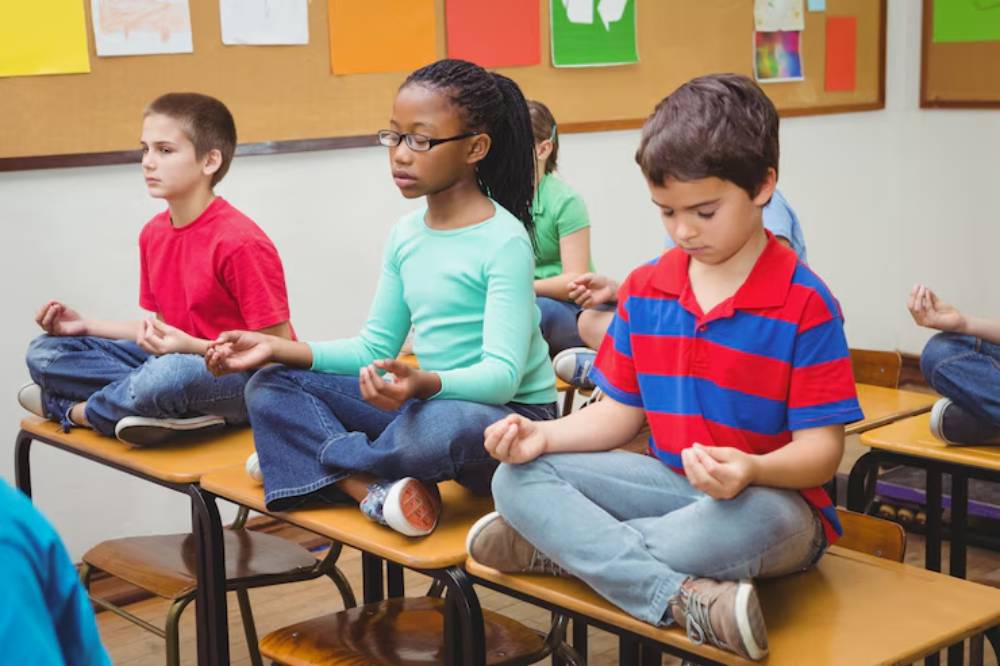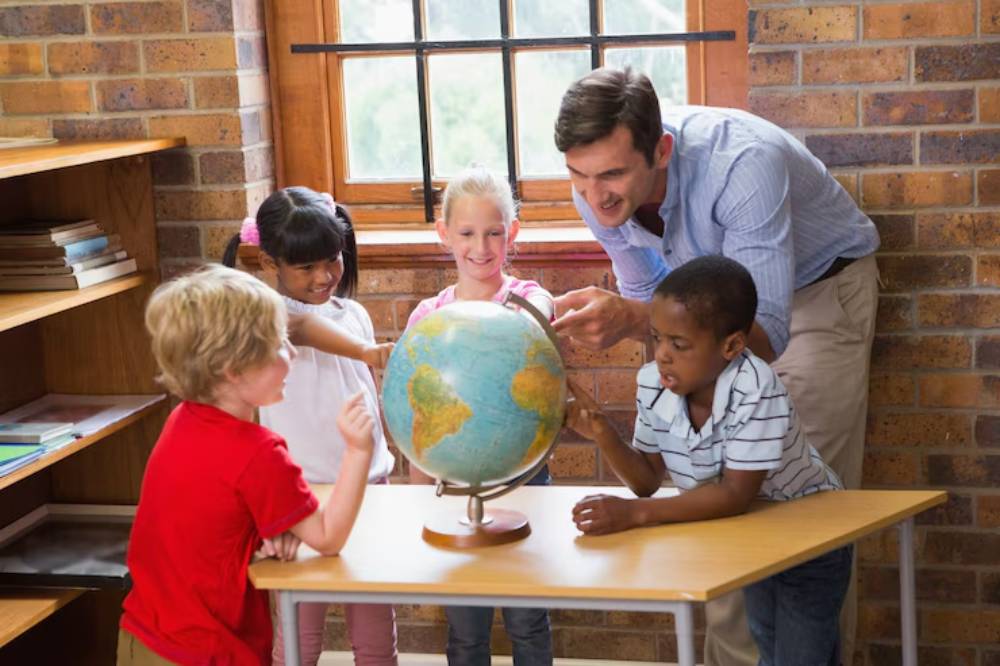The Health & Wellness Blog

Creating a Mindful School Environment
In the fast-paced world of education, anxiety about achievement often takes away the joy of learning. Mindfulness is, therefore, now an integral part of school life. Mindfulness is more than just a trend. It helps create calm and supportive spaces for students and staff. It turns schools into caring places. Here, focusing on emotions and studies works together.
This article explains why mindfulness is important in schools. It discusses the benefits and how to add it to daily routines. Small changes can make a big difference. With focus and consistency, they can build a better and more productive school environment.
The Importance of Mindfulness in Education

Mindfulness means paying full attention to what’s happening now, without judgment. In education, this means helping students and teachers pay attention to their thoughts, feelings, and actions. That awareness fosters better decision-making, more empathy, and greater focus.
Students today are confronted with a myriad of challenges in schools. Academic benchmarks, peer pressure, and the omnipresence of technology contribute to the stress. If this isn’t addressed, it can cause anxiety, low self-esteem, and disengagement from learning.
A mindful approach helps students learn the tools they need to cope. Breathing exercises, visualisations, and moments of silence can help students relax and calm their emotions. Mindfulness allows them to pause before acting. This skill is very valuable.
Teachers benefit too. And the demands of the classroom can be draining, and feeling burnt out is real. Mindfulness reduces stress. It allows you to reconnect with your purpose. At best, it helps you to try to meet challenges with a clearer perspective.
Key Benefits of a Mindful School Environment
Enhancing Focus and Concentration
It is very difficult for students to focus on their studies in the turmoil of distractions. These can range from social media to noisy classrooms to busy schedules. An introduction to mindfulness helps the brain focus. Frequent practice aids memory building. It also helps strengthen attention spans and deepens engagement with other learning tasks.
Simple practices such as paying attention to the breath before beginning a lesson can ground students and help them feel ready to learn. Mindfulness gradually cultivates the capacity to stick with a task, even when it’s hard or new.
Reducing Stress and Anxiety
Many young people carry invisible burdens. They may worry about school performance, friendships, family issues, or the future. Mindfulness encourages a pause—a moment to breathe, reflect, and reset.
Research shows that students who engage in mindfulness report lower levels of anxiety and a stronger sense of calm. This fosters a better mental space for learning. It also helps cut down on classroom disruptions from emotional overwhelm.
Promoting Emotional Intelligence
Emotional intelligence is key in schools. It helps you recognise and manage your own feelings. It also allows you to understand others’ emotions. Mindfulness nurtures this skill by encouraging reflection and self-awareness.
When students know their feelings, they can express themselves better. They also handle conflicts respectfully. It helps them build empathy. This leads to kinder and more inclusive interactions in the classroom.
Fostering a Positive School Culture

Schools are not just centres of learning. They are communities. Mindful school culture fosters compassion, patience, and respect. These values filter down to the whole school. They assist students, teachers, and parents in establishing improved relationships.
Meditative staff act calmly and mindfully through challenges. This provides students with a good role model. This creates a safe, positive energy. There’s always a support system, making school safer and more enjoyable.
Implementing Mindfulness in Schools: Practical Tips and Pitfalls to Avoid
Start Small and Be Consistent
Many people think that mindfulness needs big changes or long sessions. In fact, short, regular moments can be just as effective. Starting the day with a minute of silence or ending a lesson with a grounding breath can make a big difference.
The key is consistency. Just like physical fitness, mindfulness improves with practice. Make it part of the routine so it becomes second nature, rather than an occasional extra.
Involve the Whole School Community
For mindfulness to really take root, everyone should be involved. That includes not just pupils, but teachers, support staff, and families too.
When staff understand and value mindfulness, they’re more likely to lead by example. Parents can support the practice at home, reinforcing what children learn in school. Whole-school events, like assemblies or challenges such as “Mindful March,” can unite everyone around a shared goal.
Provide Training for Educators
Teachers are at the heart of any school, and their confidence in delivering mindfulness matters. Offering training, workshops, or even informal peer-sharing sessions can build skills and enthusiasm.
Educators should be encouraged to explore what works for them. Some like silent breathing exercises. Others prefer movement-based mindfulness, like walking meditations. Letting staff pick practices that fit their style helps them add mindfulness to daily teaching.
Avoid Overcomplicating the Practice
Mindfulness is about simplicity. It doesn’t require expensive programmes or advanced techniques. Trying to do too much at once can overwhelm students or make them feel forced.
Stick to a few clear, age-appropriate practices and allow students time to get comfortable with them. Remember, the goal is not perfection but awareness. The journey is just as valuable as the result.
Advanced Insights: What the Research Says
Research keeps demonstrating the value of mindfulness in education. Mindfulness practice can boost brain areas linked to attention, memory, and emotional control. Brain scans show these improvements.
There is a growing body of evidence connecting mindfulness to improved academic outcomes. Mindfulness practice helps students perform better on tests. They are more relaxed, which helps their focus. They also think less about negative things.
Emotional and behavioural improvements are also well documented. Mindfulness in schools leads to less conflict, fewer absences, and a better atmosphere.
Mindfulness isn’t useful only in the short term. The skills it teaches—such as self-awareness, resilience, and compassion—can last a lifetime. They support us in schools and in many spheres.
Real-Life Examples: Mindfulness in Action
Across the UK, many schools are already seeing the benefits of mindfulness.
At a primary school in Manchester, students start and finish their day with a few minutes of quiet reflection. Teachers say the children are more settled, and behaviour incidents have decreased.
In a London secondary school, a weekly mindfulness session is offered during lunchtime. It’s optional but popular. Students say it helps them handle exam stress and social issues.
These examples show that mindfulness can be introduced naturally, inclusively, and effectively with the right approach.
Conclusion: Embracing Mindfulness for a Transformative Education
Creating a mindful school environment isn’t an add-on to your day. It’s about the way we do things, being more aware and more careful. When we support students and staff in having a ball, they can settle into it now. It opens the door to more effective learning, better relationships, and well-being.
With ongoing shifts in schools, mindfulness offers sustainable direction. It encourages us to shift our thinking from all the doing to all the being — a glorious place, valuable for any age.
No matter if you’re a teacher, headteacher, parent, or student, starting a mindful school practices begins with one small step. A breath. A pause. A moment of attention.
Are you ready to take that first step?









